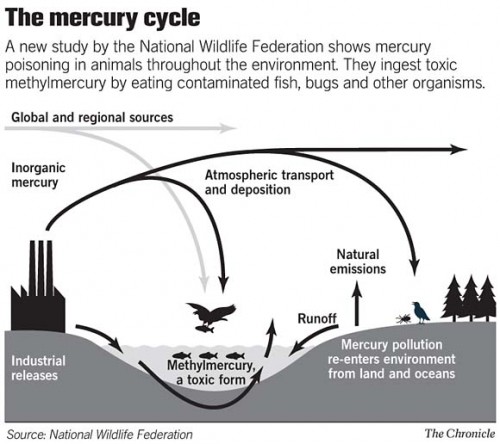In response to a court deadline, today the U.S. Environmental Protection Agency (EPA) proposed the first-ever national standards for mercury, arsenic and other toxic air pollution from power plants. The new power plant mercury and air toxics standards – which eliminate 20 years of uncertainty across industry – would require many power plants to install widely available, proven pollution control technologies to cut harmful emissions of mercury, arsenic, chromium, nickel and acid gases, while preventing as many as 17,000 premature deaths and 11,000 heart attacks a year. The new proposed standards would also provide particular health benefits for children, preventing 120,000 cases of childhood asthma symptoms and about 11,000 fewer cases of acute bronchitis among children each year. The proposed standards would also avert more than 12,000 emergency room visits and hospital admissions and 850,000 fewer days of work missed due to illness.
This rule will provide employment for thousands, by supporting 31,000 short-term construction jobs and 9,000 long-term utility jobs.
“Today’s announcement is 20 years in the making, and is a significant milestone in the Clean Air Act’s already unprecedented record of ensuring our children are protected from the damaging effects of toxic air pollution,” said EPA Administrator Lisa Jackson. “With the help of existing technologies, we will be able to take reasonable steps that will provide dramatic protections to our children and loved ones, preventing premature deaths, heart attacks, and asthma attacks.”
Toxic air pollutants like mercury from coal- and oil-fired power plants have been shown to cause neurological damage, including lower IQ, in children exposed in the womb and during early development. The standards also address emissions of other toxic metals linked with cancer such as arsenic, chromium and nickel. Mercury and many of the other toxic pollutants also damage the environment and pollute our nation’s lakes, streams, and fish. In addition, cutting these toxic pollutants also reduces fine particle pollution, which causes premature death, heart disease, workdays lost to illness and asthma.
“The American Lung Association applauds the release of this sensible public health measure. When it becomes final, the cleanup rule that the EPA is putting forward today will save lives, protect the health of millions of Americans and finally bring about an action that is 20 years overdue. This must happen,” said Charles D. Connor, president and CEO of the American Lung Association.
Power plants are the largest remaining source of several toxic air pollutants – responsible for half of mercury and more than half of acid gas emissions in the United States. In the power sector alone, coal-fired power plants are responsible for 99 percent of mercury emissions. Currently, more than half of all coal-fired power plants already deploy the widely available pollution control technologies that allow them to meet these important standards. Once final, these standards will ensure the remaining coal-fired plants, roughly 44 percent, take similar steps to decrease dangerous pollutants.
The updated standards will provide a first-ever level playing field for all power plants across the country, ensure that they play by the same rules, and provide more certainty to business. The proposed rule provides up to 4 years for facilities to meet the standards and, once fully implemented, will prevent 91 percent of mercury in coal from being released into the air.
More than 20 years ago, the 1990 Clean Air Act Amendments mandated that EPA require control of toxic air pollutants including mercury. Since then, EPA has taken action to reduce mercury emissions from many high-emitting sources; however, there is still no national standard for mercury emissions from power plants. Today’s announcement is long awaited, coming 11 years after EPA announced it would set such limits for power plants, and following a February 2008 court decision that struck down the previous administration’s mercury rule. In October 2009, EPA entered into a consent decree that required a proposal to be signed by March 16, 2011, and a final rule to be completed by November 2011.
The proposed mercury and air toxics standards are in keeping with President Obama’s executive order on regulatory reform. They are based on the latest data and provide industry significant flexibility in implementation through a phased-in approach and use of already existing technologies.
The proposed standards also ensure that public health and economic benefits far outweigh costs of implementation. EPA estimates that for every dollar spent to reduce pollution from power plants, the American public and American businesses will see up to $13 in health and economic benefits. The total health and economic benefits of this standard are estimated to be as much as $140 billion annually.
Also in keeping with the president’s executive order, the proposed standard puts a premium on important input and feedback from stakeholders to inform any final standard. The public comment period, which will last 60 days after appearing in the Federal Register, will allow stakeholders including the public, industry and public health communities, to provide important input and feedback, ensuring that any final standard maximizes public health benefits while minimizing costs.
As part of the public comment process, EPA will also hold public hearings on this proposed rule. Additional details on these events will be announced at a future date.
More information: http://www.epa.gov/airquality/powerplanttoxics/
